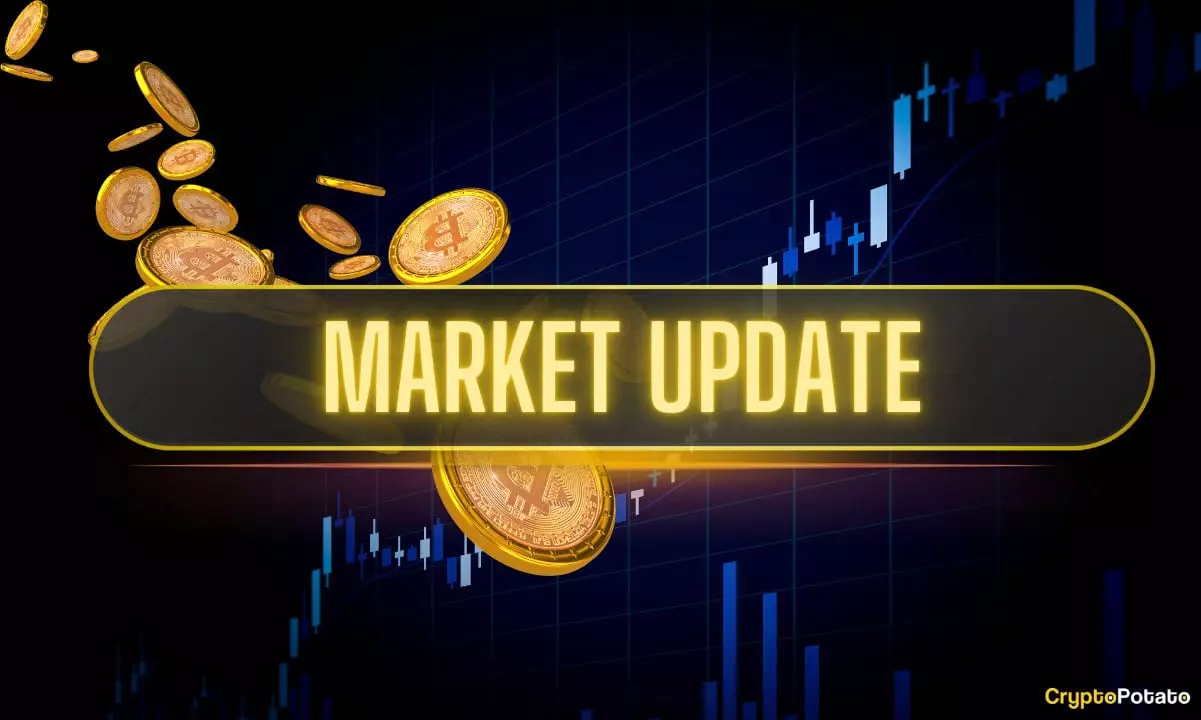The cryptocurrency market often feels like an emotional rollercoaster for investors, and this past week perfectly encapsulates that turbulent experience, particularly for Bitcoin enthusiasts. After enduring a months-long period of stagnation, price crashes, and relentless consolidations, Bitcoin finally shattered its previous all-time high of approximately $109,100, skyrocketing to an astonishing $112,000. Yet, this ascent was anything but seamless. Investors witnessed a series of challenges at the $107,000 mark that saw Bitcoin plunge significantly on multiple occasions, only to see determined bulls wrestle control back from the bears in a dramatic show of resilience.
Many analysts and market participants debated the sustainability of Bitcoin’s upward trajectory as it braced against resistance levels. The excitement surrounding this momentous achievement was palpable, yet it also reeked of the speculative frenzy that often accompanies spikes in cryptocurrency values. Capitalizing on a sharp rise can induce a false sense of security; however, one must maintain a critical perspective and not become ensnared by euphoria.
The Impact of External Forces
Interestingly enough, Bitcoin’s surge to over $112,000 was abruptly interrupted by new statements from President Trump regarding potential tariff increases targeting the European Union. This unexpected pivot in domestic economic policy sent Bitcoin’s price reeling downwards by around $3,500, showcasing how profoundly external factors can influence cryptocurrency valuations. For many in the market, the volatile response to Trump’s threats underscored a crucial detail about cryptocurrencies: their inherent tethering to broader economic and political climates.
While Bitcoin has become a beacon for financial freedom and decentralized value, it remains susceptible to the whims of traditional economic policies. Market watchers now find themselves at a crucial juncture; how much of Bitcoin’s value resides in its perceived independence from conventional finance and how much of it relies on external variables? This incident offers a lesson: although Bitcoin presents itself as a disruptive force, it cannot entirely escape the gravitational pull of governance and policy.
Emerging Competitors: The Rise of HYPE and Stablecoins
The arrival of Bitcoin’s new all-time high also rekindled conversations about emerging cryptocurrencies that may soon challenge its dominance. Among these is the newly minted HYPE token, which has seen a staggering 30% increase in value in just a week. The rapid ascent of HYPE indicates a fickle investor sentiment that can pivot at a moment’s notice—a reminder that altcoins are not merely side attractions but potential competitors in the crypto theatre.
Moreover, the conversations surrounding a consortium of major U.S. banks aiming to create a joint stablecoin stirred interest in alternative financial frameworks. As established entities like JPMorgan Chase and Citibank enter the fray, one wonders if an evolution in the cryptocurrency space may be underway. The intertwining of traditional banking infrastructure with blockchain technology presents a unique dilemma: while it could foster accessibility and mainstream integration, it also risks the centralization of an otherwise decentralized philosophy.
The emergence of mainstream banking players in the cryptocurrency domain raises questions about the balance of power. Will these banks dominate the landscape to the detriment of innovative projects, or will they merely coexist amid a diverse crypto ecosystem? As Bitcoin celebrates its recent milestones, one cannot ignore the cloud of uncertainty that looms over potential rivals and the underlying regulations that may surface in response to these financial innovations.
The Duality of Bitcoin’s Rally
While it is easy to get swept up in the excitement of a new all-time high, it’s essential to evaluate Bitcoin’s upward momentum critically. On-chain metrics reveal that the current rally appears healthier than previous spikes, opening the door to the possibility of a sustained uptrend—yet any seasoned trader will tell you that overconfidence can be a massive pitfall. Profit-taking behaviors, especially after a jubilation-fueled surge, indicate that many investors might be looking to cash in while the going is good, thereby increasing volatility in the marketplace.
Amid this volatility, Ethereum (ETH) has managed to maintain a resilient position, even facing profit-taking pressures that have caused slight losses this week. The movement of ETH, among other altcoins, provides a critical counterpoint to Bitcoin’s narrative. With such fluctuations amid a heightened state of investor awareness, market participants must tread carefully.
In essence, Bitcoin’s all-time high celebration is not merely a moment of triumph but a complicated intersection of market dynamics, economic policies, and evolving competition. As investors step forward into this thrilling yet precarious landscape, maintaining a keener focus on long-term trends and underlying fundamentals is of utmost importance. The pivotal question isn’t simply whether Bitcoin can hold its ground, but whether it can adapt and thrive amid the competitiveness of a rapidly changing digital economy.

